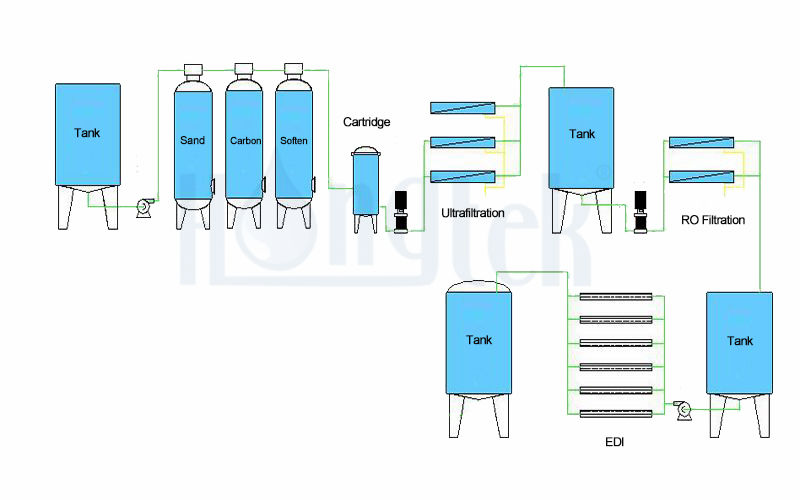
The main impurities of semiconductor cutting wastewater are industrial wastewater containing water-soluble silicon particles and cleaning agents. Direct discharge will cause pollution to the environment, and in order to fully and rationally and effectively use water resources, the cutting wastewater is generally directly filtered into ultrapure water for reuse.
The filtration process of semiconductor cutting wastewater reuse:
raw water-primary filtration-precision filtration-ultrafiltration-reverse osmosis filtration-EDI system-ultrapure water
1.Primary Filtration
The collected cutting wastewater is pumped through a raw water pump into a filtering system connected in turn by a quartz sand tank, an activated carbon tank and a softener to filter large silicon particles and some suspended material.
2.Precision Filtration
For further precise filtration of the filtrate after the primary filtration, the security filtration system is used to remove impurities such as smaller silicon particles in the liquid. It prolongs the service life of the next-stage ultrafiltration system, and reducing the filtration cost. The Hongtek Melt Blown Cartridge is generally installed in the security filtration system, and the most widely used specifications are as follow:
40" 5 micron NPP Series PP Melt Blown Cartridge
3.Ultrafiltration
Using a high pressure pump the filtrate is pumped into an ultrafiltration system for filtering treatment, to remove a part of the water-soluble silicon particles and grease and other substances in the detergent wastewater. After that the filtrate is introduced into the water tank.
4.Reverse Osmosis Filtration
The filtrate in the water tank is pumped into the reverse osmosis filtration system through a high-pressure pump to remove the remaining water-soluble silicon particles and the grease and other substances in the cleaning agent wastewater, and then is loaded into the water tank.
5.EDI System
The liquid processed to reverse osmosis treatment is pumped into the EDI system by a booster pump, and the ions in the liquid are removed by an ion exchange technology. After that it’s loaded into a high-purity water tank for production reuse.